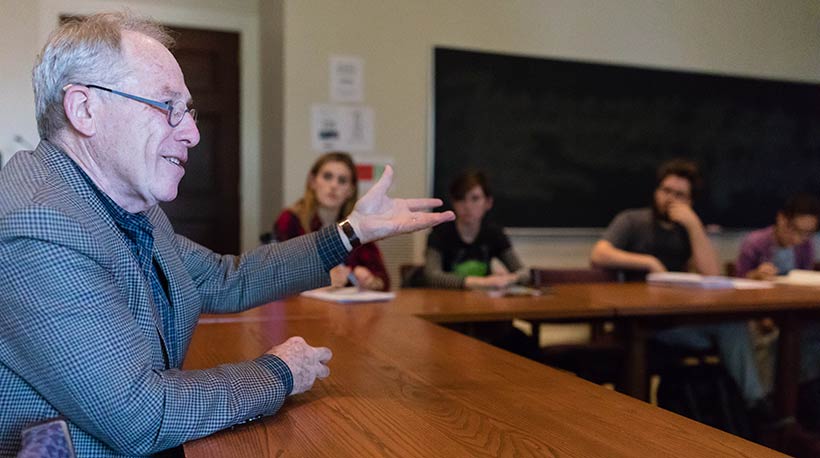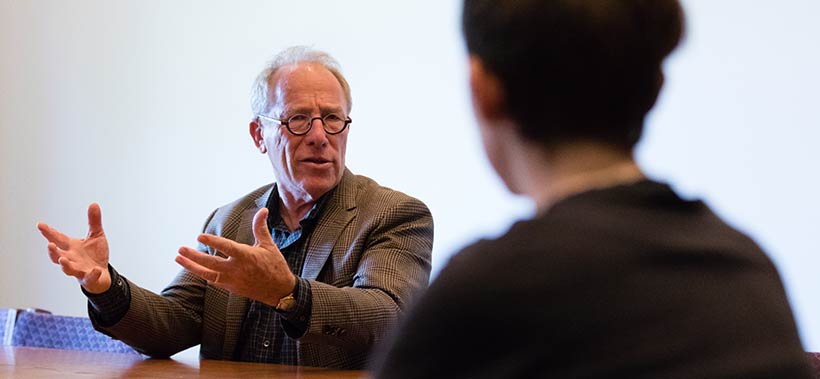Why do we create memorials to the dead, and why do they resonate?
Historian Thomas W. Laqueur posed these questions on Oct. 3 to students in Professor Natasha Staller’s class “Witches, Vampires and Other Monsters.” The upper-level art history course explores cultural connotations of “the monstrous” and how people imagine evil.
Staller invited Laqueur to her class as part of the Phi Beta Kappa Society’s Visiting Scholars Program, in which undergraduates meet and exchange ideas with scholars in the arts and humanities. Laqueur, who specializes in the cultural history of the body, led a discussion with students about Holocaust memorials and the AIDS Memorial Quilt—and, more generally, about how and why the living remember and honor the dead.

In preparation, Staller’s students watched Common Threads: Stories from the Quilt, a 1989 documentary about the AIDS quilt. They also read Laqueur’s review of the 1996 book French Children of the Holocaust: A Memorial, edited by Serge Klarsfeld.
The class conversation explored both the vilification and the memorialization of Jews who died in the Holocaust and people who died of AIDS in the 1980s. “Like the witches we studied earlier,” Staller says, “they were despised and demonized by many in society, who believed they deserved every punishment and a hideous death.”
Laqueur suggested that memorials like the quilt, with its 48,000 panels commemorating people who died of AIDS, can change historical narratives: those who died were able to increase awareness of “a terrible disease that no one was really paying attention to at the time.”

One student wondered aloud to her classmates about the intention behind memorials, asking, “Are they for families and descendants, or a way to remember and not repeat history?”
Another spoke of the ways in which memorials feature people’s names. “I once saw a memorial where families were grouped together, which gave immense context to understanding the significance of these deaths,” he said, “whereas a memorial of seemingly endless names feels more about the totality.”

The day after the class, Laqueur expanded on his ideas in a public lecture. He said caring for and remembering the dead can help us feel closer to them. Paraphrasing art critic Dave Hickey, he compared the notion of feeling close to the dead to watching a magician perform: “If what magicians did were in fact real, we would lose interest,” Laqueur said. “We take pleasure in seeing the impossible appear possible, and the invisible appear visible.” Feeling closer to those who’ve died, he said, “is magic we can believe in.”
